
Why is Taylor Swift associated with the Alt-Right movement?
Taylor Swift and neo-Nazi’s are not two things you would expect to see connected to each other. But as it turns out the pop icon is actually a much praised figure in the new right movement, which has recently been getting more attention after the election of Trump and the march in Charlottesville in August 2017. So what is it about Taylor Swift that makes her a popular figure in the alternative right movement?
Marketing surrounding Swift
What is the image of Taylor Swift? Behind every major artist in our digital culture, there is a company planning every step and trying to form an identity that they want to be associated with the artist. According to Swifties, Taylor’s dedicated fans, ’’(…) Swift is an ordinary girl, and they continually suture her musical and extratextual personas by emphasizing the autobiographical nature of her songs’’ (Brown, 2012). Brown took a look at several fan sites and found that Swift’s position as a relatable artist is a main selling point in her persona. The fans feel like they really know Taylor through her music and media presence. They see Taylor as an idol and through her lyrics they feel like they are alike, and understand one another. They can easily identify with her because of her image as an ordinary girl.
Figure 1: the all American girl-next-door.
This image of a good, 'normal' and mainstream American girl is reflected in the norms and rules of the Swift fandom (these are not explicitly written down anywhere): do not imitate, bully or curse (Swifties paper, personal information, 2017). These norms certainly comply to Swift’s nice and companionable presentation. In fact they do not deviate that much from what we expect from anybody in our mainstream society. That is not that surprising, we should remember that each sub-group ‘’ is still subjected to the rules created by society' (Becker, 1963) and in the case of the Swifties, they cannot be seen as a counterculture or subculture (Swifties, personal information, 2018). The image surrounding Swift fits perfectly well within our modern society, unlike the image surrounding the alternative right movement.
However, maybe it is exactly this sweet innocent and authentic girl persona that causes her to be attractive to the alternative right movement. The generic status as a ‘’white, middle class, heterosexual, normatively feminine girl—characteristics that are repeatedly shored up through the lyrical and visual elements of her music and music videos and through fans’ insistence that she is a ’good girl’ ’’ could be the key as to why neo-Nazi’s idolize her'' (Brown, 2012). Just like the millions of young fans do.
The generic status as a white, middle class, heterosexual, normatively feminine girl—characteristics that are repeatedly shored up through the lyrical and visual elements of her music and music videos and through fans’ insistence that she is a ‘’good girl’’ could be the key as to why neo-Nazi’s idolize her
Swift and Digital culture
Due to digital developments, the functioning of and communication within fandoms has changed. A lot of the activity within fandoms now happens online, therefore the scope of fandom has increased to crazy proportions, with millions of like minded people coming together. It has become very easy to be part of a fandom: just a simple click on a button and you're a member. This ease of access has caused changes in how people construct their identities too. ‘’People define their ‘identity’ (singular) in relation to a multitude of different niches’’ (Varis & Blommaert, 2015). These different niches can include disparate cultural groups, anything from hipster culture, LGBT culture, Hip-Hop culture etc. to being a Swiftie, a Green supporter or even a Neo-Nazi. And these niches have become more easily accessible because of new technologies.
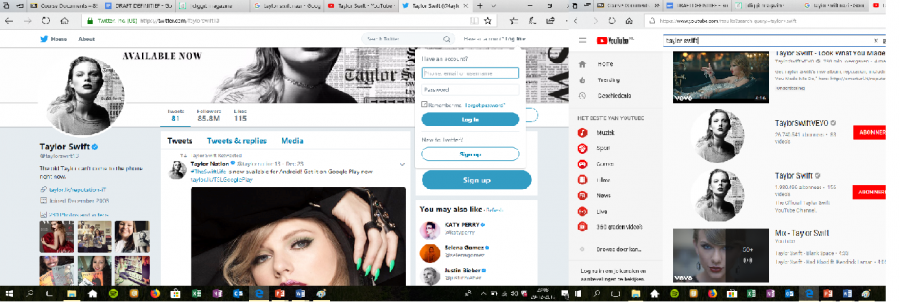
Figure 2: With millions of fans it could be anyone watching.
Western society has become a superdiverse world with all kinds of cultures, lifestyles, languages, ethnicities etc. meeting, and transforming our identities (Maly & Varis, 2015). These changes in society due to globalization and digitalization, or in other words, the interconnectedness of large parts of the globe within systems of political, economic and cultural flows and network has resulted into people having multiple identities at once.
‘’The robust hegemonies that appeared to characterize Modernity have been traded for a blending within one individual life-project of several micro-hegemonies valid in specific segments of life and behavior, and providing the ‘most logical’ solution (or the ‘truth’) within these segments’’ (Blommaert & Varis, 2015).
Being part of the Swiftie culture thus, emerges as not a homogenous subnational culture, but as‘’’(…) a translocal and layered phenomenon with contextually specific claims to authenticity, and certain material infrastructures and effects emerge with the culture’’ (Maly & Varis, 2015). No one is just a Swiftie, everyone combines a multitude of several niches and characteristics. This means that they are not all exactly the same people but people who all combine different micro-hegemonies with different layers of identity traits (Maly, 2017).
So apart from our ‘big’ modernist identities that consists of things like nationality, ethnicity, religion, gender, age, education level etc. we construct, combine and cherish large sets of “small” identities. We live a polycentric lifestyle with everyday ‘scripts’ for different social arenas that have a global origin and reach, local features and enactment. People manage“identity repertoires”, and their integration in different groups on different scales is what their identity is made of. You can be a fan of Taylor Swift while at the same time being a gun enthusiast, even though you would not normally connect these two. And we can connect this polycentric lifestyle to our digitalized lives (Varis & Blommaert, 2015). Not only society has become superdiverse, but people themselves are too. A Swiftie, although it seems to be a weird combination, can actually be a Neo-Nazi too. More to the point, the alt-right can use Taylor Swift and her celebrity status as a way to normalize their ideas among a whole new target group. Her 'normal', 'mainstream' and white American image is a good carrier for their radical ideas.
As an interim conclusion, digital media have created ‘’new forms and scales of identity construction and culture production’’ (Maly, 2017). Swifties are clearly an example of such new forms of identity production, on a new scale. Their community is largely formed online and it can reach more people than ever before. This has resulted in a superdiverse group of ‘fans’ that share an interest in the doings of the singer.
Swift's image and consumption culture
Swift’s image as an “all-American girl” is carefully cultivated and shows the capitalist marketing aims behind the persona. An artist is supposed to sell and in what way could they better achieve this than by creating an identifiable artist for mainstream America. The anti-sexualization in her work also makes her more approachable for younger audiences, ‘’However, the ways in which both Swift and her fans explicitly position her against girls who ‘whore themselves out’ sends the clear message that good girls do not have sex’’ (Brown, 2012). And that makes her even more sellable, particularly for younger audiences. However, some find this persona to specifically be one for white girls, and of course we should note here that this also creates an image that aligns with the 'paleo'-conservative agenda of the alt-right, which are two things I will return to later.
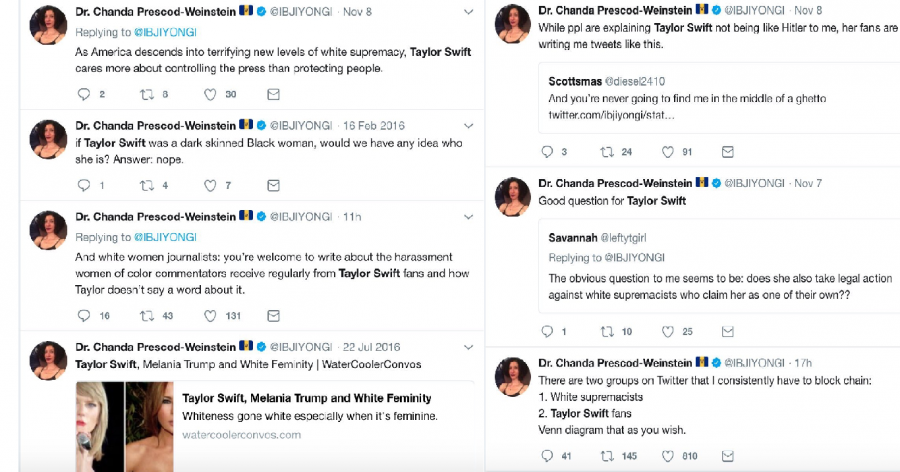
Figure 3: An active Twitter user criticizing Swift for not speaking up against racism.
The Swifties are “perfectly aligned with the neoliberal structure of the world economy where, (…), mass production for all has been replaced by niched mass production catering for the (identity) needs of specific, smaller groups” (Maly & Varis, 2015). This day and age, you are the products you buy. New economic patterns, driven by the companies and markets surrounding pop-artists, shape new social structures, behavioural frames and lifestyles like fandoms (Varis & Blommeart, 2015). When fans buy Swift products, they mostly try to become like her. It is an economic niche culture where the merchandise of Swift forms the identities of the fans. They want to be like the sweet and innocent all-American girl. The economic objects are packaged as cultural ones in the form of dreams, imaginations, aspirations etc. to become like their icon, their role-model. And the place where we perform this identity is on the new media platforms (Maly, 2017).
Therefore we could maybe imagine how shocked the community around Swift was when it became clear that she was a popular figure within a movement that is actually viewed as an outsider group by a majority of people in society, certainly within the Swiftie culture. According to Becker an outsider is someone who shows deviant behaviour according to the norms and rules of a community (1963). And if we take a look at some standards and values of the alt-right, the combination of the artist and this group becomes even more peculiar.
The emerging alternative-right and Taylor Swift
The American elections of 2016 marked the revelation of this ‘movement’. We realised what we thought was gone had just been hiding in our society. Trump gave these silent people a new voice in the form of his presidency. And with several forms being present here, what they all have in common is their anti-Enlightenment ideology: (white) ultranationalist and deeply conservative revolutionary empathies. The radical fractions also leave no doubt that they dream of a white ethno-state in America. The more moderate so-called alt-light movement adopts a more moderate ethno-cultural nationalism. Both factions - the radical alt-right and the alt-light unified under the hashtag #altright. This helped Trump’s candidacy since his idealisations complied to a lot of their ideas. They waged the discursive battle for Trump. ‘’They were the ideological mainstay of Trumps program’’ (Maly, 2018).

Figure 4: a new white supremacist group
Alt-Right can be defined as a radical new right antidemocratic movement with different centers of ideological production (Maly, 2016). Even though there are different centers of ideological production (from Breitbart, over altright.com to The Daily Stormer), we can find a common denominator. The primarily online movement stands against multiculturalism, immigration, feminism and (most proudly) political correctness’’ (Fogle, 2016). Maly stresses the importance of digital culture in spreading these radical conservative ideas.
First, ‘’there is the new intellectual impetus that arises from 2008 within conservative revolutionary circles in the US. Palaeo-conservatives, race realists, white nationalists, white supremacists and extreme right-wing internet activists are building a new - internally diverse - movement through all sorts of new media and institutions’’ (Maly, 2018, pp 89)
This group of right wing political-minded people came together on the internet and started their own way of forming a new movement to the right of the neo-conservatives dominating the Republican party.
The second aspect is the importance of the internet and it’s public forums like 4Chan and 8Chan and the digital activism, according to some against left sympathies, that comes with it.‘’The internet is influential on the one hand because it creates different platforms that allow the alt-right to bring their ideas to the woman and man. It therefore facilitates a battle of ideas or meta-politics. On the other hand, the internet culture in general and the troll culture as it exists in popular forums will give an enormous boost and especially will surround that movement with a hip and edgy aura to that movement’’ (Maly, 2018, pp 90).
In other words, the digitalisation of this group made it as big as it is now. It reaches more people in a way that is ‘cool’ and familiar to them. It gives the movement a youthful representation instead of an old conservative one. The meme was an important carrier of their ideas. It was through meme warfare, that their ideas entered the mainstream. As an example, they have taken the meme Pepe the frog as their mascot, an attempt to ‘troll’ the nation. And this seems only logical once we realise that the foundation of the group is in the online sphere (Fogle, 2016).
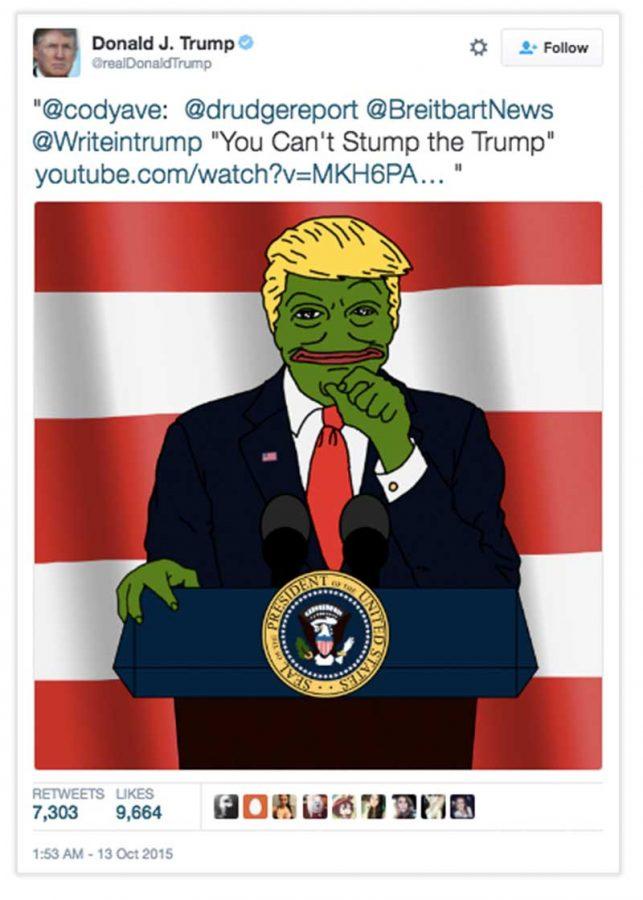
Figure 5: Pepe the frog as mascot.
Through memes, they are tying to reach the normal citizen - called normies in alt-right speak - who nowadays also spends a lot of time online, and phenomena like going viral play a huge part in this. They uses memes, their own media and mainstream digital media to 'red pill' normies, referring to the red pill metaphor borrowed from the movie the Matrix. In the alt-right discourse the 'mainstream media and the establishment' feed us lies -aka blue pills - in order to keep the liberal order up and running. The alt-right uses digital media and memes to red pill the normies: to let them see the 'real world' of race realism, gender realism etcetera, or more concretely to fight for an anti-Enlightement hegemony. They use terms and ways of communication that speak to these crowds in order to gain more support.
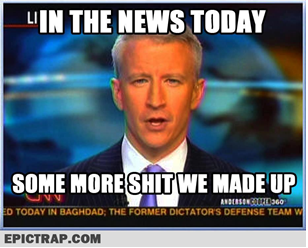
memes like these were actually supportive of Trump
‘’The alt-right therefore consists of a fairly solidly developed set of platforms, action groups, think tanks, institutes, publishers and intellectuals active in various ideological and thematic niches’’ (Maly, 2018, pp- 104). They are against multiculturalism and the liberal ideology, and that includes democracy, equality and freedom. And they do this mostly online, just like the fandoms did I spoke of before. But still, you might feel the connection to Taylor Swift is a bit vague, and I would not blame you if you do.
But why Taylor Swift?
Swift has been memefied and- just like Pepe-the-frog - appropriated as a carrier of the alt-right ideology. Neo-Nazi’s and some other alt-right movements 'ironically' idolize Swift as ‘Aryan Goddess’. They re-interpret and recontextualize her songs and works as being very red-pilled and actually as very supportive of the conservative and fascist beliefs of the group. Swift and her image is being used by the alt-right to normalize and popularize their radical beliefs. The singer, they say, is secretly a Nazi and she could not be happier with Trump as president (Sunderland, 2016). Swift has not really spoken out against these claims, causing dissatisfaction to some as we saw in figure 3.
Some believe it all started with some memes on Pinterest back in 2013, where pictures of Swift were combined with some Hitler quotes. Such 'fun and edgy parodies' are a commonly knownt actic of the alt-right. Irony and edgyness - typical characteristic of 4chan culture - are used to make a radical ideology go viral. The humor of combining the image of 'the good girl' with the quotes of a dictator created strategic ambivalence (Maly, 2017). This ambivalence allows very different users to share the memes - for fun, or for real. Swift became an important carrier of the alt-right ideology and her own image - she embodies, purity, femininity and innocence (Sunderland, 2016) - makes her an ideal candidate. The singer just has many qualities that the alt-right endorse and want the entire society to have. And both of the groups have their foundations online. ‘’Taylor Swift is a pure Aryan goddess, like something out of classical Greek poetry. Athena reborn. That’s the most important thing,” says Andrew Anglin, the writer of the white supremacist blog the Daily Stormer’’ (Dodsen, 2017).
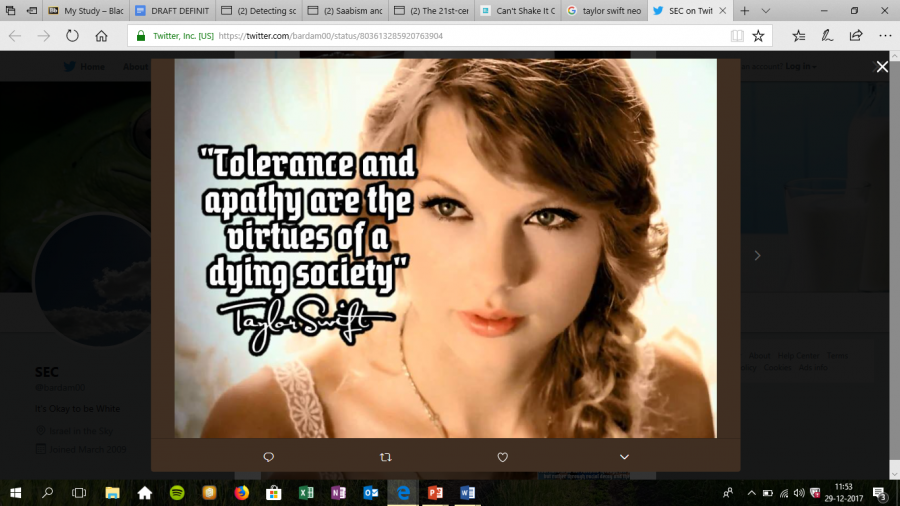
Figure 7: Memes like these may have started this weird phenomenon.
Andrew Anglin, editor of the influential and very radical neo-nazi site The Daily Stormer, immediately recognized her propaganda potential. Swift's image is carefully constructed and has created a huge following. ‘’Naturally we’re talking about Taylor Alison Swift (…), a 27-year-old singer-songwriter with a rare talent for self-preservation. Taylor Swift famously maintains strict control over her brand, and has been criticized in the past for her superficiality and attention to detail’’ (Zimmerman, 2017).
Swift has the persona of a very sweet and chill girl next door. 'She might have caused her idolisation by neo-Nazi’s all by herself. Her marketing image which was carefully produced, but they did not realise it was also one one that fits with the ideals of the alt-right.'
Breaking Persona
Old Taylor can’t come to the phone right now, why? Oh, ‘cause she’s dead (Look What You Made Me do)
With Swift’s latest album she tries to change her reputation. Her drama with the Kardashian Wests, a subject we do not need to give any attention now, plays a leading role in her new videos and music. She seems to be moving away from the American sweetheart image. In a threatening letter to Pattinson, the so-called fist creator of the parody memes on Pinterest, her lawyers state the following:
‘’The association of Ms. Swift with Adolf Hitler undisputedly is 'harmful,' 'abusive,' 'ethnically offensive,' 'humiliating to other people,' 'libelous,' and no doubt 'otherwise objectionable.' It is of no import that Ms. Swift may be a public figure or that Pinterest conveniently now argues that the Offending Material is mere satire or parody. Public figures have rights. And, there are certain historical figures, such as Adolf Hitler, Charles Manson and the like, who are universally identified in the case law and popular culture as lightning rods for emotional and negative reaction’’ (Sunderland, 2016).
So yes, her lawyers denounce the association with neo-Nazi’s. But perhaps more because it could be damaging to her image than because of what these people stand for. Taylor Swift is still 'managing her image', her brand. She knows what she wants. Having sued fans, websites, YouTubers etc in the past, who would dare to mess with her image? Maybe her new music will show that Taylor Swift is indeed more than the sweet and innocent girl next door. I come to the conclusion that the biggest link between Swift and the Nazis is her image of the pure, white and perfect (Aryan) Girl. This image has proven politically very useful for the alt-right and no lawyer will stop that from happening. Only when Taylor creates a new image, one that does not align with the ideal 'good, white, nice, mainstream American girl', can she stop being used as a carrier of the alt-right ideology.
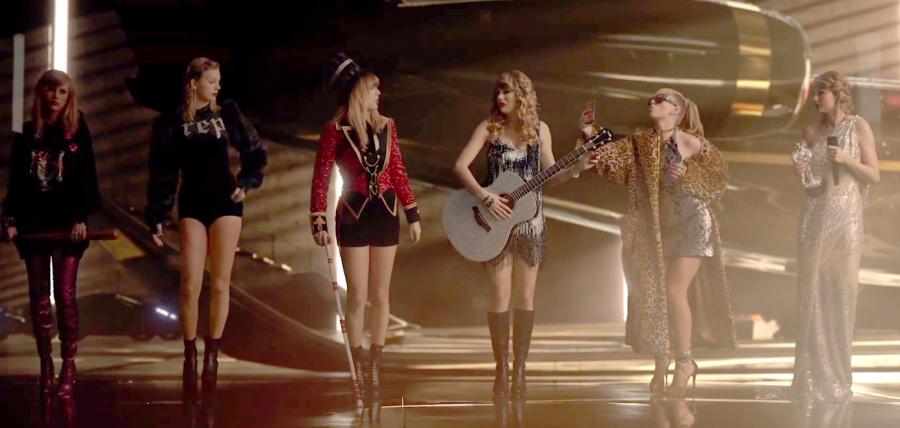
Figure 8: Taylor says bye to her old reputation(s).
References
Becker, H.S. (1963). Outsiders: studies in the sociology of deviance. New York: The Free Press.
Blommaert, J. & P. Varis (2015). Enoughness, accent and light communities: Essays on contemporary identities. Tilburg papers in Culture Studies 139.
Brown, A. (2012). ‘She isn’t whoring herself out like a lot of other girls we see’: Identification and “Authentic” American Girlhood on Taylor Swift Fan Forums. State University of New York at Oneonta: Networking Knowledge – Volume 5 issue 1.
Dodsen, C. (2017). It’s Time For Taylor Swift To Denounce The Nazi Nonsense. Fast Company.
Fogle, E. (2016). What is the Alt-Right, and why have they taken Pepe? The Oakland Post.
Maly, I. & Varis, P. (2015). The 21st-century hipster: On micro-populations in times of superdiversity. European Journal of Cultural Studies 1 –17
Maly, I. (2015). Detecting social changes in times of superdiversity: An ethnographic linguistic landscape analysis of Ostend in Belgium. Journal of Ethnic and Migration Studies. Peer review copy.
Maly, I. (2017). Knowledge in the Digital World. Notes from lectures. Tilburg University.
Maly, I. (2017). Saabism and Saabists: A digital ethnographic analysis of Saab culture. Tilburg Papers in Culture Studies – 188.
Maly, I. (2018). Nieuw Rechts, Remains to be Pulished. Translated by me.
Personal information (2018). The story of the Swifties fandom, Diggit magazine.
Sunderland, M. (2016). Can't Shake It Off: How Taylor Swift Became a Nazi Idol. Broadly.
Wilkinson, J. (2017). Taylor Swift’s new album inspires conspiracy theories. The Daily Mail.
